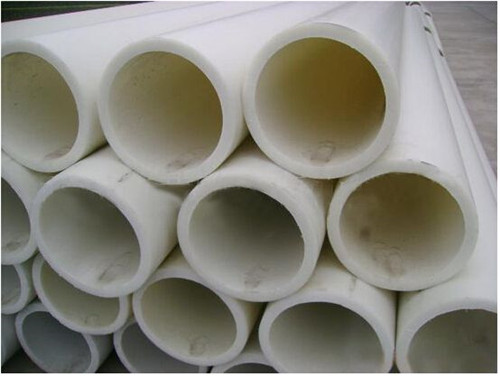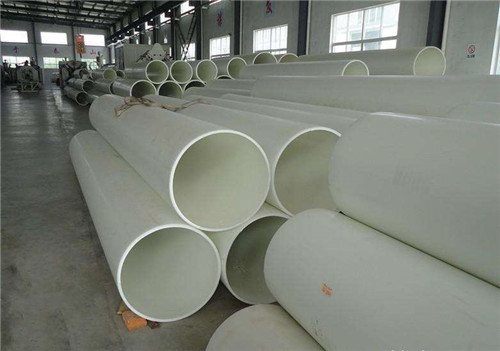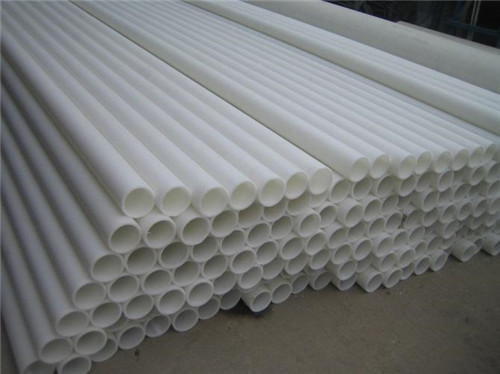The advantages of PP pipe are wear resistance, frost crack prevention, condensation prevention, simple installation and long service life. PP pipe is a non-toxic, hygienic and recyclable tube, using PP pipes, to people's lives bring great convenience, PP pipe material is mainly used in: chemical, mining, power, pharmaceutical, environmental protection, Petrochemical and sewage treatment. So, what are the characteristics of PP pipe? PE pipe and PP pipe which widely used? To help you answer questions, let me explain the relevant knowledge of PP pipe.

What are the characteristics of PP pipe
1. Non-corrosion: Under high temperature range, it can withstand PH value, with high concentration of acid and alkali corrosion ranging from 1 to 14.
2, wear-resistant, non-fouling: the inner wall is even and smooth, the flow resistance is small, and no scaling.
3, reduce vibration and noise: excellent sound insulation, reduce the vibration and noise caused by the liquid flow.
4, anti-frost crack: elasticity is good, so that the pipe and tube cross-section with the swelling of the swelling of the liquid, without bursting.
5, anti-condensation, less heat loss: bad thermal conductor, reduce condensation, and reduce heat loss.
6, simple installation: light weight, easy to operate, and weldability.
7, long service life: up to 50 years under the specified conditions of use.

PP pipe linking method
There are two ways to connect the PP pipe, 1. hot melt connection 2. fused connection. All suitable for the same PP pipe and pipe connection. Among them, the cost of fused connections is high.
The other two connection methods: flange connection and screw connection. Flange connection, connection between flanged pipe fitting and PP flanged pipe sleeve for large diameter pipe connection; screwed connection, threaded pipe fitting and pp pipe fitting with wire screw insert, suitable for connection of small diameter pipe .

PE pipe and PP pipe which are widely used
What is PE pipe:
PE, polyethylene, application range below 40 °C, can not be used for hot water pipelines. PE pipe, high crystallinity, non-polar thermoplastic resin. Has the characteristics of most living and industrial chemicals.
What is PP pipe:
PP pipe, non-toxic, high temperature, and can be recycled for indoor hot and cold water supply systems, heating systems.

Difference between PE pipe and PP pipe:
The scope of application of the two is different. PP is used in hot and cold water pipes, but also in the field of central air-conditioning systems. PE pipes are used in large diameters and are used for municipal water supply pipes and gas supply pipes.
PP pipe, can be used as hot and cold water pipe, working temperature 60 to 70 degrees, instantaneous temperature of 95 degrees, used in the indoor cold and hot water transport, require dark cover installation, using hot melt socket connection, must use special socket welding machine
PE is polyethylene; use temperature is not more than 45 degrees, diameter is DN1100. Currently used in the field of gas transmission and distribution, municipal water supply, indoor cold water transportation, sewage, etc., with good prospects, leader in pipeline materials. Currently used for the same Layer drained HDPE pipe.
Raw materials are extracted from petroleum, but PP is extracted from PE, so PP is more expensive. PP pipe is used for hot and cold water supply, and PE is used as a tap water project in the village.
Editor's summary: The above is a brief introduction of the characteristics of PP pipe and the difference between PE pipe and PP pipe. Hope to help friends who have this requirement! For more information, please continue to pay attention to our website. Follow-up will present more exciting content!
PP tube
Ring magnets are permanent magnets that are distinguished by their shape: they are round with a hole in the middle, and because of this shape they are sometimes referred to as donut magnets.
Ring magnets are most commonly used in science experiments, although they also have medical applications. Some people have implantable cardioverter-defibrillators, or ICDs, that automatically apply shocks to their hearts if the rhythm develops irregularities. If the devices malfunction, they can shock the patients unnecessarily, leading to irregular rhythms and possibly death. Medical personnel sometimes place these magnets on patients` chests over the ICDs to disable the devices.
Ring magnets are similar to discs, but feature a hole in the centre. The reduced volume of the magnet results in less strength, but increases their versatility - rings slide easily onto tubes or rods. Rare Earth rings are available in sizes from 6mm outer diameter up to 120mm, and with a variety of internal diameters and thicknesses.
Ring Magnet,Ndfeb Ring Magnet,Neodymium Ring Magnet,Multipole Ring Magnet
Jinyu Magnet (Ningbo) Co., Ltd. , https://www.magnetbonwin.com
